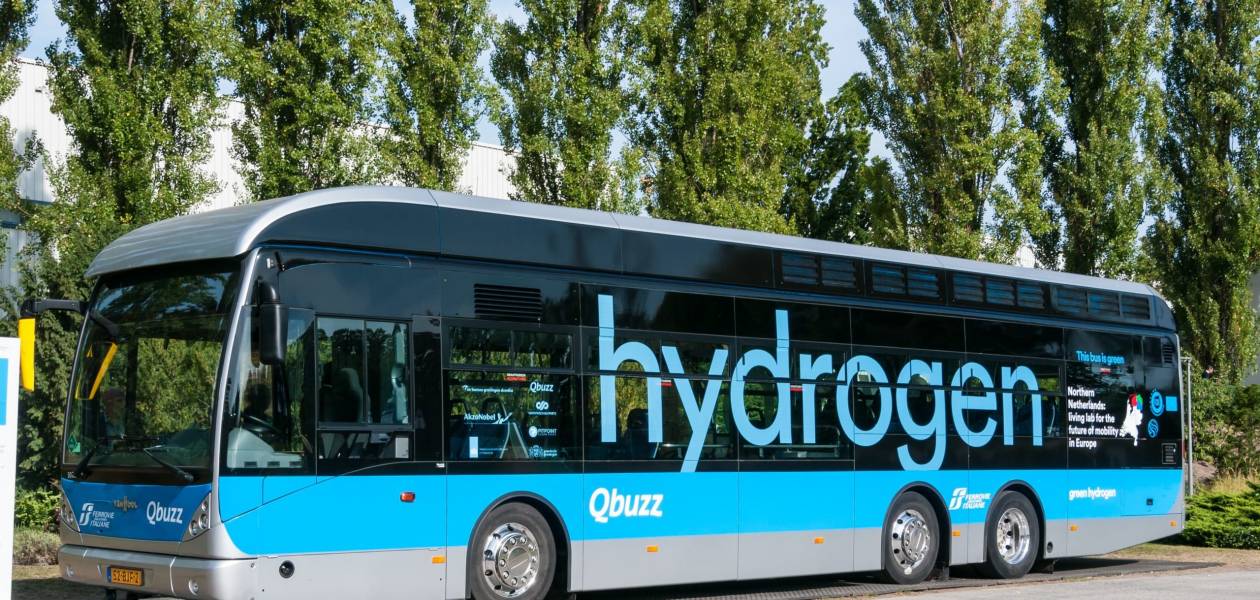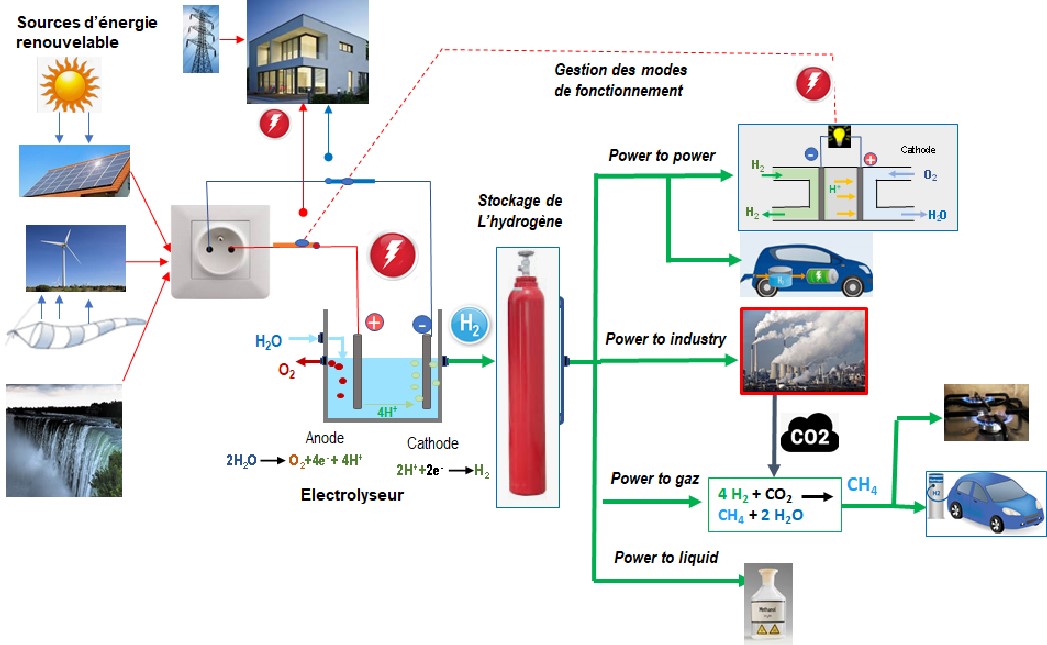
Hydrogen is at the center of many studies around the world. Industrialists and researchers promise it a glorious future which could be the solution towards an accelerated decarbonisation of our societies.
To illustrate, let's take the example of ITM Power in Sheffield, England. This company, created by Mrs. Rachel Smith, manufactures devices known as electrolysers. The principle is simple: divide the water into hydrogen and oxygen.
Rachel Smith has lived the chaotic journey of green hydrogen, moving from a scientists' dream to an industry that may be on the verge of commercial breakthrough. An engineer, two decades ago she began to work, in an old converted barn, on the first devices to produce clean gas. Today, she is part of a team fighting to build giant machines that will use electricity to separate hydrogen from water for big companies like Royal Dutch Shell and Orsted, the Danish wind turbine developer. offshore. "Our first years were years of infancy," said Ms Smith, managing director of ITM Power, from her expanding plant in Sheffield, a former site for steel mills and coal mines. “We are now playing in the big leagues rather than in the research labs. "
A consensus is forming among governments, environmentalists and energy companies that significant reductions in carbon emissions will require large amounts of clean fuels like hydrogen.
Proponents of hydrogen have identified more than two dozen potential applications of the element to reduce carbon emissions. It could be used to power trucks that travel very long distances as well as train and plane travel. Energy companies are experimenting with mixing hydrogen and natural gas for home heating and cooking.

In total, more than 200 large-scale projects are underway to produce or transport hydrogen, including investments of more than $ 80 billion. Daimler and Volvo, the world's largest truck makers, plan in a few years to start mass-producing long-haul electric trucks that will run on devices called fuel cells, converting hydrogen into electricity. Water will be the only emission from the trucks. “You could imagine an economy that is almost entirely supported by very clean electricity and very clean hydrogen ,” said Ernest Moniz, secretary of energy in the Obama administration and now chief executive of Energy. Futures Initiative, a research organization. But he warned that "a lot has to happen" for a gas now mainly used in specialist fields to become "part of the backbone of the energy system."
The main obstacle to be overcome is to create enough hydrogen, at a price that industries and consumers can accept.
Hydrogen is the most abundant element in the universe, but it must be separated from another substance, such as water or fossil fuels. For example, industries like petroleum refining use large amounts of so-called gray hydrogen which is primarily made by separating hydrogen from natural gas. And this process generates more greenhouse gas emissions than the combustion of diesel. In fact, less than 5 percent of the hydrogen produced today is emission-free, and the latter costs more than twice as much to manufacture as the gray version - $ 5 per kilogram versus $ 1 to $ 2 per kilogram, according to Bernstein, a research firm. It is also more expensive than conventional fuels, such as diesel. Ms Smith's company in Sheffield is one of the most promising sources of hydrogen produced without producing emissions. Its electrolysers use electricity to split water into hydrogen and oxygen. This hydrogen is emission-free provided the electricity comes from sources such as wind and solar.
Electrolysers have been around for a century, but analysts say ITM's technology, known as the polymer electrolyte membrane, has the advantage of being able to turn on and off quickly - a big advantage for machines intended for be coupled with wind and solar parks, the production of which fluctuates with the sun and the breeze. ITM says the value of its contracts has tripled in the past year to reach 154 million pounds, or roughly $ 213 million. Analysts at Barclays, the UK bank, estimate that a $ 65 billion market for such equipment could materialize over the next decade.
Investors have understood the enormous potential of companies like Ms. Smith's and investing in ITM, as well as similar companies like NEL in Norway and McPhy Energy in France. Even though ITM is losing money, it has a market value of around £ 2.3bn. The share price has quadrupled since early 2020. Today, ITM has 310 employees. While it was still a start-up, Peter Hargreaves, one of its initial investors, had to save the company four times using his own money, he said. "There was no guarantee that the business was going to be successful, that people were going to embrace the hydrogen economy ," said Mr. Hargreaves, founder of Hargreaves Lansdown, a brokerage firm. He added that by then he had been "well rewarded".
Until recently, ITM focused on building small devices for facilities like gas stations, some of which were operated by Shell, which served a handful of hydrogen-powered vehicles. Today, it is pursuing much larger projects capable of running enough hydrogen to power the fleets of trucks or buses. It has partnered with Linde, the German industrial gas supplier, which has a 17% stake in ITM. This year it moved to the Sheffield plant - the size of two football pitches, said to be the world's largest electrolyser plant - with the aim of producing facilities in the world. industrial scale. The nerve centers of these gas factories are units with tightly stacked cells, like cafeteria trays, where the separation of hydrogen from water takes place. Many modules can be linked together to create very large installations which will in turn be able to produce clean and abundant hydrogen.
Recently, Shell started operating one of ITM's largest electrolyzers at a refinery in Germany. Electricity will come from wind farms and hydrogen will be used to remove sulfur from fuels. Later, an expanded facility can produce hydrogen for an aviation fuel that burns with lower emissions. ITM is also working on a plant to supply up to 45 tonnes of hydrogen per day to an industrial area in the Humber region in north-east England. Electricity would come from an offshore wind farm.
Bigger machines coupled with cheaper renewable energies should improve the hydrogen economy. Researchers at McKinsey, the consultancy, expect green hydrogen to be cheap enough by 2030 to compete with other energy sources
For now, however, clean hydrogen projects require government subsidies, and customers should always be prepared to pay more for the energy they produce. For hydrogen to become a major energy source, it will require other big changes, such as regulations that encourage the use of green hydrogen in industry and heating. It will also need better infrastructure and consumers willing to adopt new habits. To take an example, it took a long time for hydrogen to establish itself as a fuel for cars despite the advantages such as longer ranges than contemporary electric batteries and the possibility of refueling in a few minutes. Shell has already built a network of hydrogen filling stations in Europe, but German automakers have chosen to focus on battery-powered vehicles. There are only 1,200 hydrogen fuel cell vehicles in Germany, and Shell concedes that hydrogen attracts few customers. At a Shell gas station in Frankfurt, the hydrogen pump was in the back, where customers clean the inside of their cars. A digital sign designed to display the price of hydrogen was placed near the entrance to the station, but it was dark.
The industry outlook "is very optimistic about how easy this will bring," said Stephanie Searle, director of the fuels program at the International Council on Clean Transportation in Washington. “But it's going to take a lot of commitment to get there. "
Sources: USA Today
Posted on 2021-07-14 11:00








Comments